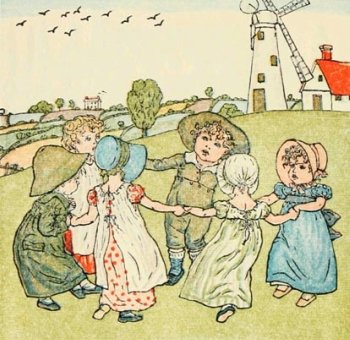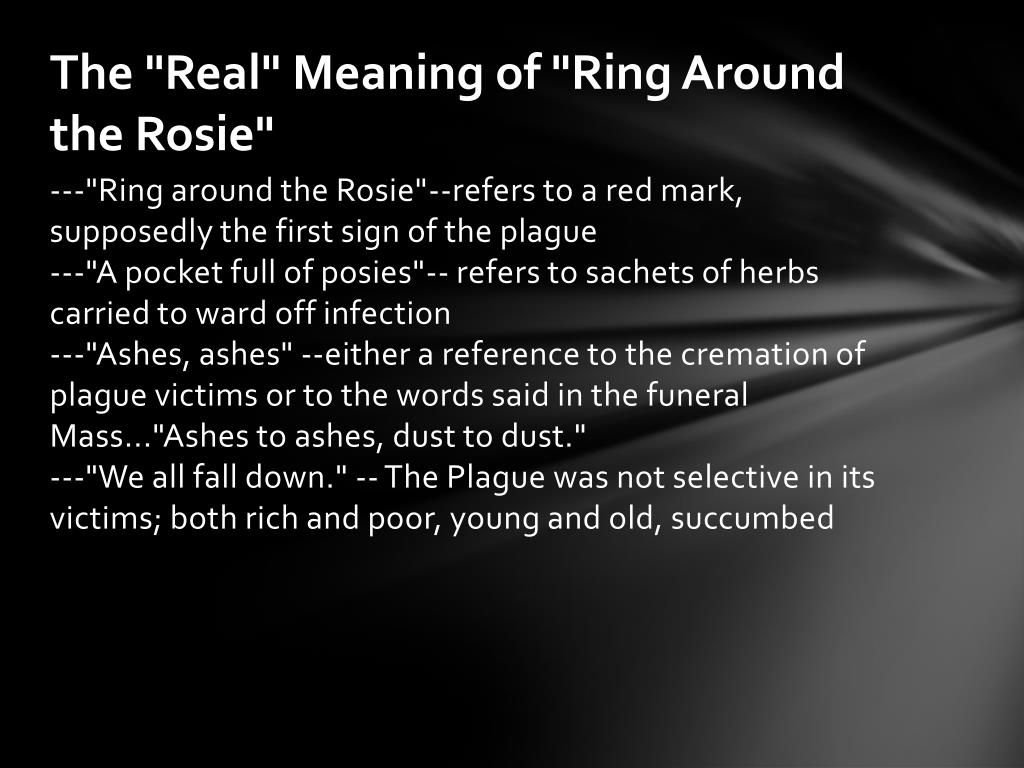

children's rhymes would have been of little interest to authors in the 17th century and printing was then still an expensive process. That 'ring a ring o'roses' lay unrecorded between 16 doesn't seem entirely impossible - many phrases have lain dormant for longer than that. The Black Death wasn't the only occurrence of plague in England - the population also suffered Great Plague of 1665. The argument that the lyric couldn't have lasted in common playground parlance without being recorded in print from the days of the Black Death in the 1340s until 1881 has some weight.

Newell was a respected folklorist but, unfortunately, he didn't supply documentary evidence for his assertion. William Wells Newell, the author of Games and Songs of American Children, 1884, wrote that Ring a Ring a Rosie, with the familiar tune, was in use by children in Bedford, Massachusetts, circa 1790. This depicts children playing 'Ring, ring a rosy' in New York. The game and the rhyme were known in the USA, and quite probably elsewhere, by 1855, when it was included in The Old Homestead, a novel by Ann S. Let's look at those items of evidence in turn:įirstly, the 1881 date that is part of the refutations is a little misleading it is the first known printing of the complete rhyme, but the game and the 'ring a ring of rosies' line were known well before that.

If the theory were true then we would expect to see it in circulation much sooner than that.ĭespite the strong evidence against it, some of the refutations of the plague theory are rather too emphatic in their rejection of this idea. The noted folklorists of childhood Iona and Peter Opie have reported that the plague theory didn't appear until the 1950s.

The 'atishoo, atishoo, all fall down' lyric isn't present in many of the the numerous versions and neither soreness about the mouth nor sneezing tally with the actual symptoms of people suffering from bubonic plague.ģ. The first appearance of the rhyme in print is in Kate Greenaway's Mother Goose, which wasn't published until 1881, suggesting that the rhyme originated far too late for the Great Plague to have been the origin:Ģ. The idea is usually dismissed for these reasons:ġ. Those with more knowledge of etymology will shake their heads sagely and explain that the plague theory is a well-known falsehood. Of plague victims, who subsequently sneezed and fell down dead. Theory has it that the 'ring' was the ring of sores around the mouths It is often suggested that the rhyme relates to the symptoms of plague, specifically the Black Death - the bubonic plague that spread through Europe in the 1340s, or to the Great Plague of London, 1665/6. The many versions aren't surprising as, being lines from a playground rhyme, they would have first been spoken, sung or chanted rather than recorded in a book. The most common variant of the third line, especially in the USA, is 'ashes, ashes'. The most commonly seen first lines are 'ring a ring of (or o') roses (or rosy)' and 'ring around a rosy'. There are many versions of this rhyme, some of which use entirely different words to the roses/rosy variants. What's the origin of the phrase 'Ring aring of roses, a pocketfull of posies, atishoo, atishoo, all fall down'? The phrase 'Ring a ring of roses' may, and then again may not,ĭerive as an allusion to the symptoms of bubonic plague. Childhood What's the meaning of the phrase 'Ring aring of roses, a pocketfull of posies, atishoo, atishoo, all fall down'?įrom a nursery rhyme.


 0 kommentar(er)
0 kommentar(er)
